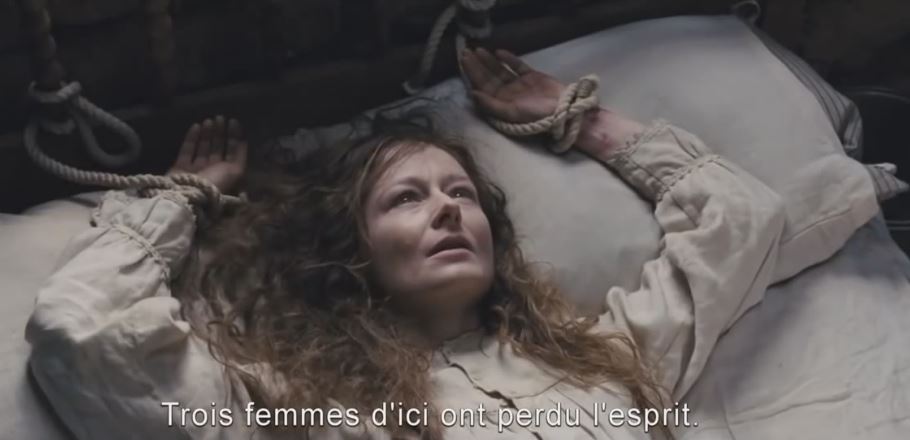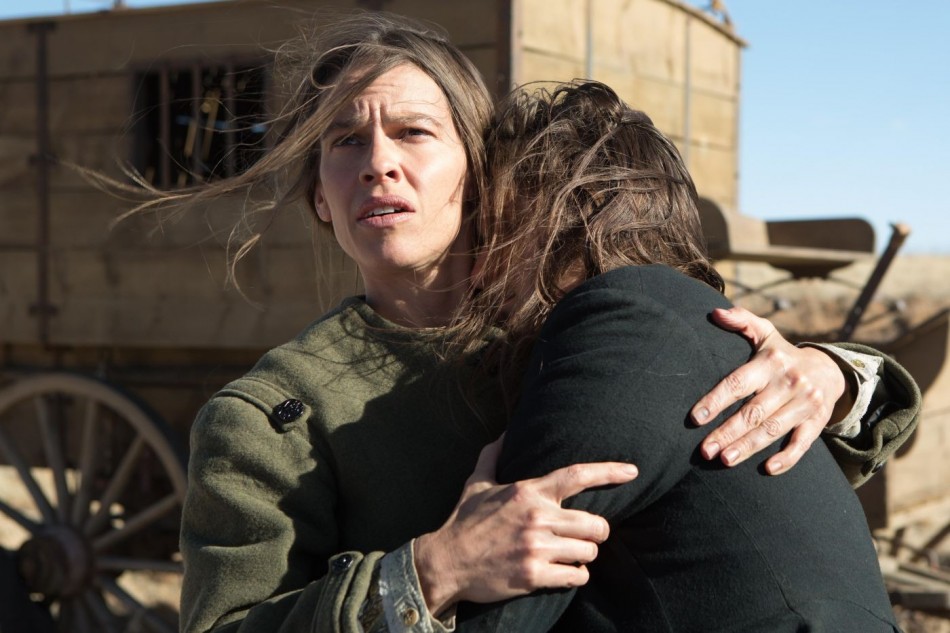
Rape Culture, Rolling Stone, and the Homesman
There is nothing new about rape culture although some of its purveyors are indeed new. Britons’ radicalizing extends to British women acting as wardens over imprisoned sex slaves in ISIS prisons in Iraq and Syria. ISIS in September 2014 had forced 3000 Yazidi women into sex slavery and continues to sell them as jihadi brides for $25. These radicalized British women are now actively recruiting their sistren on social media to run prison brothels.
Meanwhile, at home, Rolling Stone magazine has issued a retraction of its story on a gang rape, about seven fraternity members allegedly attacking “Jackie,” on the University of Virginia campus.
The public is no closer to learning what is journalistically “true” or accurate given that the Rolling Stone reporter abjured the journalistic requirement of interviewing Jackie’s alleged assaulters both “to honor her request“ and “for fear of retaliation against her.”
When the magazine fell on its sword on December 5th after other media outlets, the Washington Post included, had reported further on “discrepancies” in Jackie’s account, a UVA official told NPR that the outcomes of this meant suffering for all involved: Jackie (whose name has been outed by a freakish, hoax-hurling conservative blogger), the men at the fraternity “and frankly, the credibility of survivors everywhere.”
The credibility of survivors everywhere takes me into the new movie, The Homesman — which deals in part with the culture of rape and the different storytelling shapes it has assumed over cinematic epochs.
We can start with John Ford’s The Searchers (1956), with Natalie Wood’s ravishment by “Scar” that so horrified John Wayne. We can carry it through to Robert Altman’s McCabe and Mrs. Miller (1971) with the frontierswoman’s Julie Christie’s ability to run a better brothel and own some financial power. Now, we’ve got The Homesman. The Homesman, along with McCabe and also, Homestead (1979), based in a woman’s 1914 memoirs of life on a southwestern Wyoming homestead (and starring Rip Torn), are the genre-bending western or the anti-Western.
Actor-director Tommy Lee Jones co-wrote The Homesman screenplay with Kieran Fitzgerald and Wesley Oliver, based on a 1988 novel by Glendon Swarthout. Hilary Swank stars as Mary Bee Cuddy to Jones’s George Briggs. They’re an unlikely pair tasked with taking women whom prairie life in the Nebraska Territory (and rape) have driven mad, “home” to the east of the Missouri River. These women’s histories are plangent indeed.
We don’t sit around a century later saying it must not have happened. It seemingly and absolutely did — just as women now whom we cannot see but whom the news tells us exist in Islamic State prisons are brutalized beyond comprehension. So it seems that a job description called a “homesman” in 1850s Nebraska territory, in this movie is filled by a woman, Cuddy, who had made her way west with her brains, her strength and her pluck, and has by the time of the film’s denouement, issued two marriage invitations to men who both denounce her as “plain” and “bossy.”
It is this same Mary Bee Cuddy, whose ilk of pious decency with a deep beat of what we’d call longing, becomes the central point of interest in this movie that turns the victims of marital rape and the perpetuators of matricide — one throws her baby to death down a latrine — into as mute a cast as Jane Eyre’s madwoman in the attic.
The women by the time they are corralled into a small wooden wagon that could be a funeral wagon no longer speak but snarl, stab, kick or sit fidgeting with a doll’s hair. The defilement of bodies gets a parallel in the way a horse is cut loose as a way of satiating the presumed blood-thirst of a small band of lavishly painted Indians. The four rounds in the gun are urged on Mary Bee Cuddy as a save-yourself-for-last instruction.
It is hard to say where in this movie one can really start paying attention to the facts of the plot which put Hilary Swank’s achievements as a single woman effectively to the front of your memory only after all the other plot lines are through.
My friend with whom I went to the film told me that some 90% of women who were part of this enormous westward migration before the Civil War lost their minds to mental illness. The Kansas-Nebraska Act of 1854 created the Nebraska Territory that swabs an illusory optical dry ocher over the opening scenes. (The movie was filmed, actually, in New Mexico and Georgia.) . The vastness of the territory in the middle 1850s spanned the northern Great Plains (Kansas, Nebraska, the Dakotas), most of the upper Missouri River basin and the eastern part of the northern Rockies in the Colorado, Wyoming, Montana.
Indeed, as Cuddy and Briggs set off with their cutters and screechers in back, the journey is punctuated by trails of what has been effectively the unspoken, the invisibility of the domestic crimes and the casualties to state-ward expansion (of which we are now seeing egregious international example in the ISIS prison stories and at home, the incredibly disturbing revelations of CIA-authored torture after 9/11.)
It’s how normal a story it is that makes the premise believable and indeed, historically based. And so we keep saying how can this be true? But the real question is how can it be not?
This film’s ensemble cast includes Grace Gummer, who is the daughter of Meryl Streep, plus Miranda Otto and Sonja Richter as the madwomen. Strong cameos are delivered by John Lithgow, James Spader and Santa Fe’s Jo Harvey Allen in a potent, small role as a stern-faced churchwoman.
This is an important movie that perhaps wanted a slightly different organization to its front-to-back nature, given that so little of what see about this time and this prairie can be understood as rough chronology, rather as only rough approximation of stories so old they are never, fully, new.

